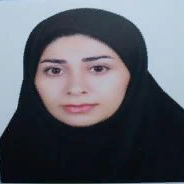International Journal of Image, Graphics and Signal Processing (IJIGSP)
IJIGSP Vol. 8, No. 10, 8 Oct. 2016
Cover page and Table of Contents: PDF (size: 1969KB)
Evaluation Compressive Sensing Recovery Algorithms in Crypto Steganography System
Full Text (PDF, 1969KB), PP.53-63
Views: 0 Downloads: 0
Author(s)
Index Terms
Decryption, encryption, image steganography, singular value decomposition (SVD), compressive sensing (CS)
Abstract
The main contribution of this paper is using compressive sensing (CS) theory for crypto steganography system to increase both the security and the capacity and preserve the cover image imperceptibility. For CS implementation, the discrete Cosine transform (DCT) as sparse domain and random sensing matrix as measurement domain are used. We consider 7 MRI images as the secret and 7 gray scale test images as cover. In addition, three sampling rates for CS are used. The performance of seven CS recovery algorithms in terms of image imperceptibility, achieved peak signal to noise ratio (PSNR), and the computation time are compared with other references. We showed that the proposed crypto steganography system based on CS works properly even though the secret image size is greater than the cover image.
Cite This Paper
F. Kafash Ranjbar, S. Ghofrani,"Evaluation Compressive Sensing Recovery Algorithms in Crypto Steganography System", International Journal of Image, Graphics and Signal Processing(IJIGSP), Vol.8, No.10, pp.53-63, 2016. DOI: 10.5815/ijigsp.2016.10.07
Reference
[1]A. Ahani and Sh. Ghaemmaghami, "Image Steganography based on Sparse Decomposition in Wavelet Space," IEEE International Conference on Information Theory and Information Security (ICITIS), pp. 632–637, 2010.
[2]A. D. Ker, "A Capacity Result for Batch Steganography," Signal Processing Letters, vol. 14, no. 8, pp. 525–528, 2007.
[3]C. K. Chan and L. M. Cheng, "Hiding Data in Images by Simple LSB Substitution," Pattern Recognition, vol. 37, no. 3, pp. 469–474, 2004.
[4]Z. Liang, "Wavelet Domain Steganography for JPEG2000," IEEE International Conference on Communications, Circuits and Systems Proceedings, vol. 1, pp. 40–43, 2006.
[5]R. Safy, H. Zayed, and A. Dessouki, "An Adaptive Steganographic Technique Based on Integer Wavelet Transform," IEEE International Conference on Networking and Media Convergence, pp. 111–117, 2009.
[6]A. J. Raphael and V. Sundaram, "Cryptography and Steganography–A Survey," International Journal of Computer Technology Application, vol. 2, no. 3, pp. 626–630, 2010.
[7]J. Varghese, "Image Encryption and Compression using Embedding Technique," Master thesis, Department of Computer Science, Christ University Bangalore, 2010.
[8]P. Marwaha, "Visual Cryptographic Steganography in Images," Second International conference on Computing, Communication and Networking Technologies (ICCCNT), pp. 1-6, 2010.
[9]S. Song, J. Zhang, X. Liao, J. Du, and Q. Wen, "A Novel Secure Communication Protocol Combining Steganography and Cryptography," Advanced in Control Engineering and Information Science, vol. 15, pp. 2767–2772, 2011.
[10]M. Unser, "Sampling—50 Years after Shannon" Proceedings of the IEEE, vol. 88, no. 4, pp. 569–587, 2000.
[11]E. Candes, J. Romberg, and T. Tao, "Robust Uncertainty Principles: Exact Signal Reconstruction from Highly Incomplete Frequency Information," IEEE Transaction of Information. Theory, vol. 52, no. 2, pp. 489–509, 2006.
[12]D. L. Donoho, "Compressed Sensing," IEEE Transaction of Information Theory, vol. 52, no. 4, pp. 1289–1306, 2006.
[13]J. Bowley, and L. Rebollo-Neira, "Sparsity and Something else: an Approach to Encrypted Image Folding," IEEE Signal Processing Letters, vol. 18, no. 2, pp. 189–192, 2011.
[14]Y. Rachlin, and D. Baron, "The Secrecy of Compressed Sensing Measurements," IEEE Forty-Sixth Annual Allerton Conference on Communication, Control, and Computing, vol. 52, pp. 813–817, 2008.
[15]M.R. Mayiami, B. Seyfe, and H.G. Bafghi, "Perfect Secrecy via Compressed Sensing", IEEE Workshop on Communication and Information Theory (IWCIT), pp. 1- 5, 2013.
[16]A.V. Sreedhanya, and K.P. Soman, "Ensuring Security to the Compressed Sensing Data Using a Steganographic Approach," International Journal of Advances in Image Processing, vol. 3, no. 1, pp. 1–7, 2013.
[17]C. Hung Chuang, and G. Shiang Lin, "The Optical Image Cryptosystem with a Position Selected Data Embedding Technique," Proceedings of National Computer Symposium (NCS), vol. 3, pp. 531–536, 2007.
[18]G.S. Lin, H. T. Chang, W.N. Lie, and C.H. Chuang, "A Public-Key-Based Optical Image Cryptosystem Based on Data Embedding Techniques," Optical Engineering, vol. 42, no. 8, pp. 2331–2339, 2003.
[19]W. Chung Kuo, "Data Hiding Method with High Embedding Capacity Character," International Journal of Image Processing (IJIP), vol.3, no.6, pp. 310–317, 2010.
[20]M. Amin, "A Steganographic Method Based on DCT and New Quantization Technique," International Journal of Network Security, vol.16, no.4, pp. 265–270, 2014.
[21]M. Khodaei and K. Faez, "New Adaptive Steganographic Method using Least Significant-Bit Substitution and Pixel-Value Differencing," IET Image Processing, vol. 6, no. 6, pp. 677–686, 2012.
[22]T. Blumensath and M. E. Davies, "Sampling Theorems for Signals from the Union of Finite-Dimensional Linear Subspaces," IEEE Transaction of Information Theory, vol. 55, no. 4, pp. 1872–1882, 2009.
[23]R. G. Baraniuk, "Compressive Sensing," IEEE Signal Process Magazine, vol. 24, no. 4, pp. 118–120, 124, 2007.
[24]E. J. Candes, "Compressive Sampling," International Congress of Mathematicians, vol. 3, pp. 1433–1452, 2006.
[25]E. J. Candes and M. B. Wakin, "An Introduction to Compressive Sampling," IEEE Signal Process Magazine, vol. 25, no. 2, pp. 21–30, 2008.
[26]M. Duarteand Yonina and C. Eldar, "Structured Compressed Sensing: From Theory to Applications," IEEE Transactions on Signal Processing, vol. 59, no. 9, pp. 4053–4085, 2011.
[27]J.A. Tropp and S.J. Wright, "Computational Methods for Sparse Solution of Linear Inverse Problems," Proceedings of the IEEE, vol. 98, no. 6, pp. 948 –958, 2010.
[28]G. Davis, S. Mallat, and M. Avellaneda, "Adaptive Greedy Approximations," Constructive Approximation, vol. 13, no. 1, pp. 57–98, 1997.
[29]D. Needell and J. A. Tropp, "CoSaMP: Iterative Signal Recovery from Incomplete and Inaccurate Samples," Applied and Computational Harmonic Analysis, vol. 26, no. 3, pp. 301–321, 2008.
[30]B. Thomas, "Accelerated Iterative Hard Thresholding," Signal Processing of Elsevier, vol. 92, no. 3, pp. 752–756, 2012.
[31]E. Candes and J. Romberg, "L1-Magic: Recovery of Sparse Signals via Convex Programming," URL: www. acm. caltech. edu/l1magic/downloads/l1magic. Pdf4, 2005.
[32]T. Hale, W. Yin and Y. Zhang, "A Fixed –Point Continuation Method for– Regularized Minimization with Applications to Compressed Sensing," Department of Computer in Application Mathematical in Rice University, CAAM Technical Report TR07-07, pp. 1- 45, 2007.
[33]F. Vivek, S. Jagabathula and D. Shah "Sparse Choice Models," IEEE, 46th Annual Conference on Information Sciences and Systems (CISS), pp. 1–28, 2012.
[34]I. Venkata Sai Manoj and B. Tech, "Cryptography and Steganography," International Journal of Computer Applications, vol. 1, no. 12, pp.63–68, 2010.
[35]H.C. Andrews and C.L. Patterson, "Singular Value Decomposition (SVD) Image Coding," IEEE Transaction on Communications, vol. 24, no. 4, pp. 425–432, 2002.
[36]H. A. Abdallah, "An Efficient SVD Image Steganographic Approach," International Conference on Computer Engineering & Systems (ICCES), pp. 257–262, 2009.
[37]G. Jyothish Lal, V. K. Veena and K. P. Soman, "A Combined Crypto-Steganographic Approach for Information Hiding in Audio Signals Using Sub-band Coding, Compressive Sensing and Singular Value Decomposition," Springer Berlin Heidelberg, Communications in Computer and Information Science, vol. 377, pp. 52–62, 2013.
[38]P. Baoand Max, "Image Adaptive Watermarking Using Wavelet Domain Singular Value Decomposition," IEEE Transactions on Circuits and Systems for Video Technology, vol. 15, no. 1, pp. 96–102, 2005.
[39]F. Petitcolas, R. Anderson, and M. Kuhn, "Information Hiding – a Survey," Proceedings of the IEEE, vol. 87, no. 7, pp. 1062–1078, 1999.
[40]S.A. Laskar and K. Hemachandran, "High Capacity Data Hiding using LSB Steganography and Encryption," International Journal of Database Management Systems (IJDMS), vol.4, no.6, pp. 57–68, 2012.
[41]B. E. Carvajal–Gámez, F. J. Gallegos–Funes and J. L. López–Bonilla, "Scaling Factor for RGB Images to Steganography Applications," Journal of Vectorial Relativity, vol. 4, no. 3, pp. 55–65, 2009.
[42]G. Ulutas, M. Ulutas and V. Nabiyev, "Distortion Free Geometry Based Secret Image Sharing," Procedia Computer Science, vol.3, pp. 721–726, 2011.

